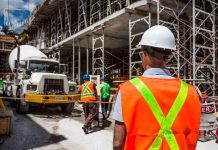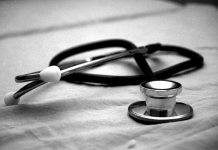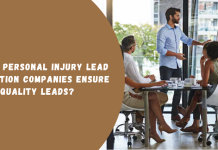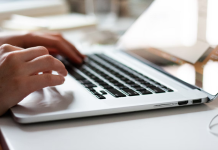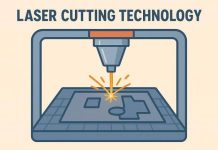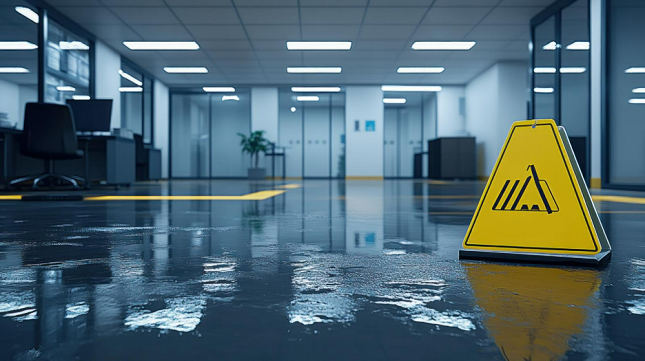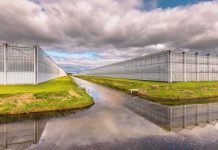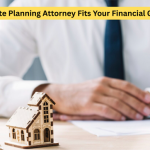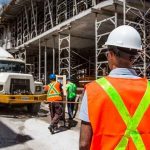A commercial roof is one of the most important parts of a building. It shields your entire business, from valuable equipment to the people who work and visit inside. But over time, even the strongest roofs break down from constant exposure to sun, wind, and water.
As a business owner, the last thing you want is to deal with unexpected leaks, costly repairs, or interruptions that affect your operations. That’s why paying attention to the early warning signs makes a huge difference.
Here are some clear indicators that it may be time to consider replacing your commercial roof.
1) Persistent Leaks and Water Stains
Frequent leaks are one of the clearest indicators that a roof no longer performs as it should. A drip here and there during heavy rainfall might seem manageable, but if water consistently finds its way inside, the roof’s integrity is compromised. Ceiling stains, damp walls, and unusual odors often point to a roofing system that has reached its limit. While a patch might work temporarily, ongoing leaks suggest a larger issue.
In that case, full reroofing becomes the more practical and long-term solution. Just make sure to work with a reputable roof replacement Sarasota service or a trusted expert in your area to get the job done right. Review their credentials, check references, and read testimonials. These details can guide you in making an informed choice, so you can feel confident you’re choosing the right team for the job.
2) Noticeable Roof Membrane Damage
Flat commercial roofs often use TPO, EPDM, or PVC membranes. Over the years, these materials can crack, bubble, or pull away from the seams. When that happens, the roof loses its ability to form a watertight seal. If large areas of the membrane are affected, minor repairs will not restore the original performance.
Damage at this scale often signals the roof is nearing the end of its service life. Exposure to harsh sunlight, temperature fluctuations, and heavy rain accelerates wear and tear. Once the material deteriorates, a full replacement provides better protection than piecemeal fixes.
3) Rising Energy Bills
A roof in poor condition can contribute to higher utility costs. When insulation becomes saturated or the roof’s reflective coating wears away, the building has difficulty maintaining comfortable indoor temperatures. This forces heating and cooling systems to work harder, driving up energy consumption.
While energy spikes can stem from many sources, a damaged or outdated roof is often a hidden factor. A new roof equipped with modern insulation and reflective surfaces can significantly improve energy efficiency, leading to long-term savings.
4) Frequent Need for Repairs
The roof may be past its prime if maintenance crews are constantly called out to patch leaks, reattach flashing, or address water damage. Occasional repairs are normal, but when they become routine, costs add up quickly. At a certain point, investing in a replacement is more economical than repeatedly funding short-term fixes.
Beyond the financial aspect, ongoing repair work disrupts normal business operations. Employees and customers may feel inconvenienced by construction activity. Replacing the roof provides a more permanent solution, eliminating recurring disruptions.
5) Visible Sagging or Uneven Areas
A roof should appear flat and even across its surface. If sections begin to sag or dip, structural issues could be developing. And it often results from prolonged water pooling or weakened decking underneath. This condition poses serious safety risks and should not be ignored.
If left unaddressed, structural instability can lead to partial collapse. At this stage, replacing the roof is not just about preserving the building—it’s about ensuring safety for everyone inside. A new roof restores stability and eliminates the dangers associated with sagging areas.
6) Age of the Roof
Every roofing material has a lifespan. For example, TPO and PVC roofs often last between 20 and 30 years, while EPDM can last even longer under ideal conditions. Once a roof approaches or exceeds its expected lifespan, problems become more frequent and severe.
An aging roof may not show immediate damage, but that doesn’t mean it’s still reliable. Older roofs are more vulnerable to leaks, wind damage, and insulation issues. Replacing an old system before it fails helps avoid costly emergencies.
7) Pooling Water After Rain
Flat roofs are designed with drainage systems to prevent water from sitting on the surface. When those systems fail, water can pool for days after rainfall. This standing water puts pressure on the roofing membrane and increases the risk of leaks.
Persistent pooling is often a sign of design issues or structural damage. While drains and slopes can sometimes be adjusted, a roof that consistently holds water may need a full revamp. Ignoring the problem only accelerates deterioration.
8) Damaged Flashing and Seals
Flashing and seals protect the vulnerable areas where the roof meets walls, vents, or HVAC equipment. Over time, these components can crack, rust, or pull away. Once that happens, water can easily penetrate the building.
Small seal failures can often be repaired, but widespread flashing damage signals deeper concerns. If water has already seeped under the membrane, insulation and decking may be compromised. Replacement ensures that new flashing and seals are properly integrated with the roofing system.
9) Mold, Mildew, or Musty Odors Indoors
Indoor air quality problems sometimes stem from roof leaks. When moisture enters the premises, it creates an environment where mold and mildew thrive. Employees may notice musty odors or, worse, experience health issues such as allergies and respiratory discomfort.
Addressing mold without fixing the source is ineffective. If leaks are frequent and moisture intrusion continues, roof replacement becomes necessary to solve the problem. A dry, sealed roof creates a healthier environment inside the building.
10) Granule Loss or Surface Wear
For roofs with protective coatings or surfaces, granule loss is another red flag. These granules shield the material from UV rays and weather damage. When they begin to wear away, the roof is more exposed to sunlight and prone to cracking.
Excessive surface wear means the protective layer is gone, and the roof is aging quickly. Replacing it ensures the building is safeguarded against harsh elements, rather than relying on a weakened barrier.
Takeaway
A commercial roofing system rarely fails without warning. The signs often start small, but if overlooked, they can quickly develop into costly problems.
When repairs no longer deliver lasting results, investing in a new roof or a complete roofing overhaul is the most practical choice. Working with experienced roofing professionals ensures the installation is handled correctly and tailored to your commercial building’s needs.
Taking action early keeps your operations running without interruption and safeguards valuable assets inside the property. Just as important, it improves efficiency and provides long-term peace of mind for your business.













